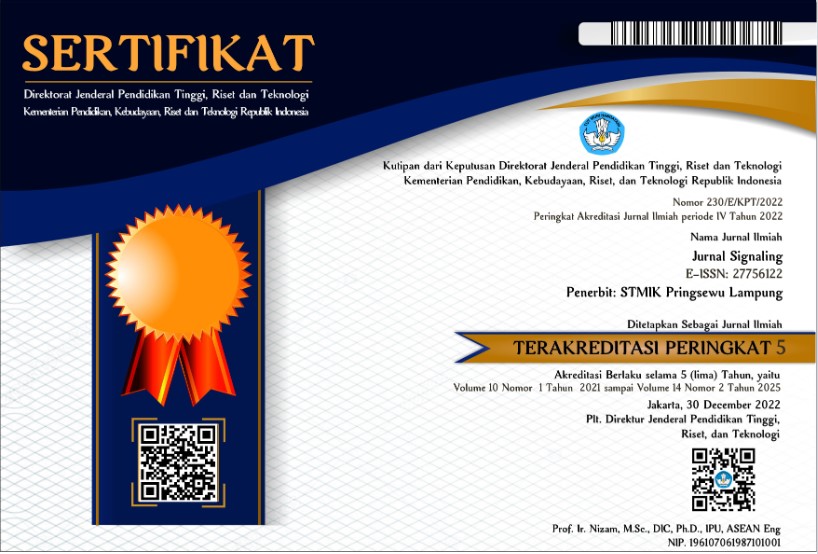PELUANG DAN TANTANGAN LEMBAGA KEUANGAN SYARIAH MENGHADAPI MEA (MASYARAKAT EKONOMI ASEAN)
(1) Prodi Manajemen Pendidikan Islam, STIT Pringsewu, Lampung
 Corresponding Author
Corresponding Author
Abstract
This study aims to determine the opportunities and challenges of Islamic financial institutions in facing the ASEAN Economic Community (AEC) and how the strategies of Islamic Financial Institutions to win the competition of the ASEAN Economic Community (AEC). The method used is a qualitative method with a descriptive analysis approach that seeks to analyze various challenges, opportunities and strategies of Islamic Financial Institutions in facing the AEC (Asian Economic Community). The results of the study indicate that the opportunities for Islamic financial institutions in Indonesia can be strong in the face of the MEA. The challenges for Islamic financial institutions in Indonesia are the low quality and quantity of human resources with a sharia economic background, the sharia financial market share which is still relatively small compared to conventional finance, the level of understanding and awareness of sharia society is still lacking in the economy, lack of product development innovation and services that are competitive and based on community needs. Lack of support from the government, both in the form of regulatory support and government capital support. Strategies that must be carried out by LKS in Indonesia to increase competitiveness so that they are able to survive in the MEA competition are: Improving the quality and quantity of human resources, socialization and education to the community, service improvement and product differentiation, and support from all stakeholders, especially the government.
Keywords
References
Ahmed, Abdulrahman Yousri. (2002). Theoritical Foundation of Islamic Economics. .Jeddah: Islamic Research and Training Institute Islamic Development Bank.
Alamsyah, Halim. (2012). Perkembangan dan Prospek Perbankan Syariah Indonesia: Tantangan dalam Menyongsong MEA 2015, Disampaikan dalam Ceramah Ilmiah Ikatan Ahli Ekonomi Islam (IAEI), Milad ke-8 IAEI, 13 April 2012.
BPS (2010), Penduduk Menurut Kelompok Umur dan Agama yang Dianut. Tersedia di: http://sp2010.bps.go.id/index.php/site/tabel?tid=320&wid=0. Diakses pada 10 Mei 2018.
Chapra, M Umer. (2002). What is Islamic Economics?. Jeddah: Islamic Research and Training Institute Islamic Development Bank.
Hidayat, Yayat Rahmat. (2017). Analisis Pencapaian Tujuan Bank Syariah Sesuai UU No 21 Tahun 2008. Jurnal Amwaluna Vol. 1 No. 1 Januari 2017 hal. 34-50.
Hosen, M Nadratuzzaman dan Ali, AM Hasan. (2007). Tanya Jawab Ekonomi Syariah. Jakarta: PKES Publishing.
Karim, Adiwarman A. (2013). Ekonomi Mikro Islam, Edisi Ketiga. Jakarta: PT. Rajagrafindo Persada.
Kurnia, Nenny dkk. (2015). Islamic Finance Outlook 2015.
Nawawi, Ismail. 2009. Ekonomi Islam: Perspektif Teori, Sistem, dan Aspek Hukum. Surabaya: CV. Putra Media Nusantara.
OJK. (2018), Statistik Perbankan Indonesia Bulan Maret 2018. Jakarta: Otoritas Jasa Keuangan.
OJK. (2017), Statistik Perbankan Syariah Bulan Desember 2017. Jakarta: Otoritas Jasa Keuangan.
Shidqi, M. Nejatullah. (2004). Riba, Bank Interest and the Rational of its Prohibition. Jeddah: Islamic Research and Training Institute Islamic Development Bank.
Sudarsono, Heri. (2012). Bank dan Lembaga Keuangan Syariah: Deskripsi dan Ilustrasi. Yogyakarta: Ekonisia.
Suhendi, Hendi. (2011). Fiqh Muamalah. Jakarta: PT. Rajagrafindo Persada.
UU No.2 Tahun 1992.Tentang Usaha Perasuransian.
Wangke, Humprey, Peluang Indonesia dalam MEA 2015, Info Singkat Hubungan Internasional, Vol. VI, (Mei 2014). insane Press. Thn. 1997.
Article Metrics
Abstract View : 149 times
: 149 times Download : 27 times
Download : 27 times
DOI: 10.56327/signaling.v11i2.1264
Refbacks
- There are currently no refbacks.







